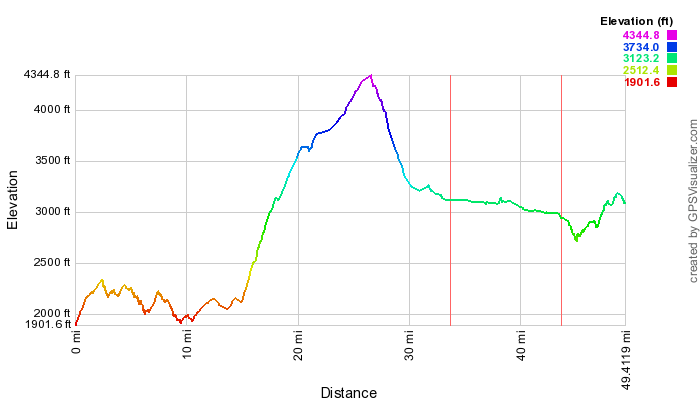I think the range comparison is highly variable, dependent on the type of driving you do.
The longest single charge drive I regularly make in my LEAF is shown In the profile below:
My maximum Summer range seems to be about 113 miles on this trip that has close to 6,000 ft of ascent and descent, using 100% charge. and driving to just past VLBW.
http://www.mynissanleaf.com/viewtopic.php?f=31&t=9064&p=203116#p203116" onclick="window.open(this.href);return false;
But my winter maximum range on this trip is more like 90 miles.
You can argue what "practical" means as long as you like.
It sounds to me like a Volt on this trip, would have an initial all-electric range of only 15-20 miles.
...When I left for Seattle on my long trip, I kept the car in electric mode until I used up about half of my battery—approximately 15 miles—which got me out of the city and about 10 miles down the highway. At that point I switched to Mountain Mode and within three miles my Volt test car switched over to charge-sustaining hybrid mode. I soon entered the mountains and the car did use some battery power to get me over both passes....
http://www.plugincars.com/chevy-volts-mountain-mode-vastly-underrated-yields-new-driving-strategies-107176.html" onclick="window.open(this.href);return false;
What a Volt would
tell its driver is the "electric miles driven" at the end of this trip is any one's guess.
From what I can tell, Volts may overstate "electric miles" driven, by counting the lower kW use miles driven (downhill) disproportionately, as "electric".
If a Volt driver want to give this drive a try, I might consider letting you recharge at my home.
But I also doubt you'll even make it up the grade to my Home, the 25-30 mile trip from Redding, without burning gas, In "mountain mode".
That's the reverse trip on this one-way profile:
I can drive the first 25 miles of this trip, to central Redding locations, and return, year round, on an 80% charge.
I do like to give my LEAF a higher charge, to 90%-100%, in winter, or when I want to drive further, to insure I get home without the LBW or VLBW.





